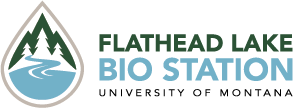Rachel Malison
Rachel Malison
Assistant Research Professor

Rachel Malison
Email: rachel.malison@umontana.edu
Rachel Malison grew up in northern Idaho. After completing her MS in Ecology at Idaho State University and her PhD in Systems Ecology at the University of Montana, Rachel lived overseas in Norway for a Marie Curie Fellowship before returning back to Montana. She then completed a postdoc at FLBS on a project funded by the National Science Foundation's Dimensions of Biodiversity program that investigated the biodiversity vulnerability of stonefly (Plecoptera) species in river floodplains.
Rachel is an Assistant Research Professor at FLBS and in the Ecology & Evolution Program at UM. She also developed and runs FLBS's Monitoring Montana Waters program, which supports water quality monitoring efforts in Montana by providing scientific, technical and financial support to citizen-science watershed groups. MMW offers assistance and support in designing monitoring plans, selecting analytes for analysis, and providing on the ground training in methodologies. For further information visit the Monitoring Montana Waters page under Outreach or email mmw@flbs.umt.edu. In late 2023 she was awarded a large EPA grant to greatly expand our efforts to protect Montana's waters by developing a Pesticide Stewardship Partnership Program for the Columbia River Basin portion of western Montana.
Rachel’s research interests focus on freshwater systems and span from investigating the genetics and physiology of macroinvertebrates to studying population and community ecology of large river floodplains. She is interested in how aquatic and terrestrial habitats are connected by the flow of energy and organisms (e.g., emerging insects) and has studied the effects of wildfire on linked stream and riparian (areas between waterways and land) systems. She is also passionate about salmon conservation and has studied both juvenile Pacific and Atlantic salmon populations. Recent work has focused on the ecology, physiology and genetics of river and aquifer stonefly populations in western Montana, and how certain species are adapted to live in extreme underground environments. She also has active projects investigating beaver dam analogs and on freshwater habitat for salmon in Alaska. In 2024 Jake McArtor joined her team to complete a MS degree investigating the effects of wildfire on metal concentrations in streams and the effects of metals on aquatic macroinvertebrates and their physiology.
Files
Rachel Malison Curriculum Vitae_2025_4 (Apr)_18.pdf

